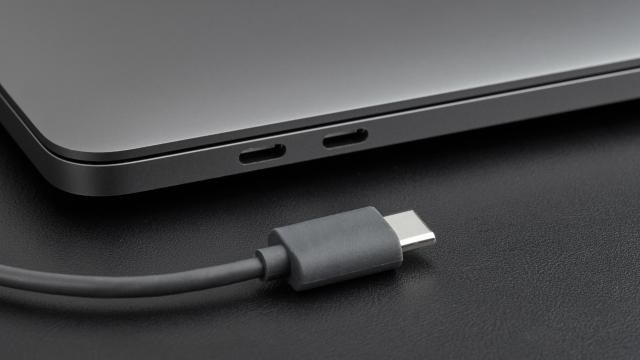The last laptop, Android smartphone, or game console you bought most likely came with a USB-C port. If you buy a lot of tech, you may be quite familiar with this new type of USB. But if you’re not, you may be wondering what USB-C is, and why your old cables no longer work.
USB-C is a new standardized port to replace previous USB connectors, like USB Type-A as well as microUSB. For the most part, it rocks, but it does have some downsides and caveats you need to be aware of. Main takeaway: Not all USB-C ports are created equal.
What is USB-C?
The USB-C port was introduced back in 2014 by the USB Implementers Forum (USB-IF). Since its introduction, USB-C has slowly replaced other USB ports on devices of all kinds: You probably have some tech that sport the port, including smartphones, tablets, laptops, and game consoles. If you upgraded your PS4 to a PS5, for example, the controllers switched from a micro USB port to USB-C.
While many companies have adopted the new port in the years since its introduction, there are some that have been slow to adapt. Apple is arguably the most infamous: The company was aggressive with adding USB-C ports to its MacBook lineup (backtracking in recent years), but stubbornly refused to use USB-C with the iPhone. Instead, they still implement their proprietary Lightning port.
Unfortunately for Apple—but fortunately for the rest of us—that’s about to change. The European Union announced last year that USB-C will be the common charging port for all mobile phones (iPhones included), tablets, and cameras. The EU’s main reason for requiring USB-C as the standard is to help reduce e-waste. The EU’s USB-C mandate is set to go into effect by the end of 2024, which is why rumours point to the iPhone 15 as the first smartphone from Apple to use USB-C. Thank goodness.
One cable to rule them all
USB-C is so much better than the ports that came before. One of the biggest benefits is simple: it’s reversible. It doesn’t matter which way you plug in your USB-C cable to your device’s port, as either orientation will work. Gone are the days of fumbling with your USB cable to plug it in correctly, so long as you’re using USB-C, anyway.
USB-C is also universal, so you’re able to use your USB-C cable with any of your USB-C devices. This is a game changer: So long as all your devices have USB-C ports, you could bring one cable with you wherever you go. You can plug your smartphone in overnight, then use that cable to charge your laptop, your headphones, your game controller, and the list goes on.
In addition, USB-C also supports faster charging speeds (with a compatible charger), as well as faster file transfer speeds (up to 10 or 20Gbps with compatible hardware).
USB-C gets confusing fast
With all those benefits, however, come some downsides. While it’s great that USB-C is so universal, not all USB-C cables are created equal. You need to be careful when buying them if you want to take advantage of the speeds USB-C is capable of.
For example, USB 3.1 (or USB 3.2 Gen 1) can only transfer data at 5Gbps. Next is USB 3.2 2×1 (formerly known as USB 3.1 Gen 2), as well as USB 3.2 1×2, both of which have speeds of up to 10Gbps.
If you’re looking for the fastest speeds possible, keep an eye out for USB 3.2 cables, which have transfer speeds of up to 20 Gbps—or even USB4, which offers speeds of up to 40 Gbps (note, though, that not as many devices support USB4 yet). The most recent version of USB4, USB4 2.0, offers speeds of up to 120Gbps.
The one you need to really watch out for, however, is USB-C 2.0. USB 2.0 is an old standard that is slow by today’s expectations. These cables can only transfer data at 480 Mbps, which is a fraction of the speeds you’ll find in the cables above. These cables aren’t good for data transfer, and they’re definitely not good for charging devices. Fun fact: Apple’s Lightning cables only support USB 2.0, too.
You’ll also need to pay attention to both ends of a USB-C cable. While many sport USB-C on both ends, some have a different type of plug on one side. It’s common to see USB-A ports on one end of a USB-C cable, to connect a USB-C device to a USB-A device. The Nintendo Switch uses this type of cable to connect the USB-C Switch Pro Controller to the USB-A port on the dock, for example.
When buying new USB-C cables, make sure to take a close look at the packaging. If you need that cable to be able to transfer data quickly, or to charge a large device, you probably want to pick one with at least 10Gbps. Also, make sure the plugs work for your use case: If you need to connect two USB-C devices together, make sure both ends use USB-C. If you need to connect a USB-C device to a USB-A device, buy accordingly.

Leave a Reply
You must be logged in to post a comment.